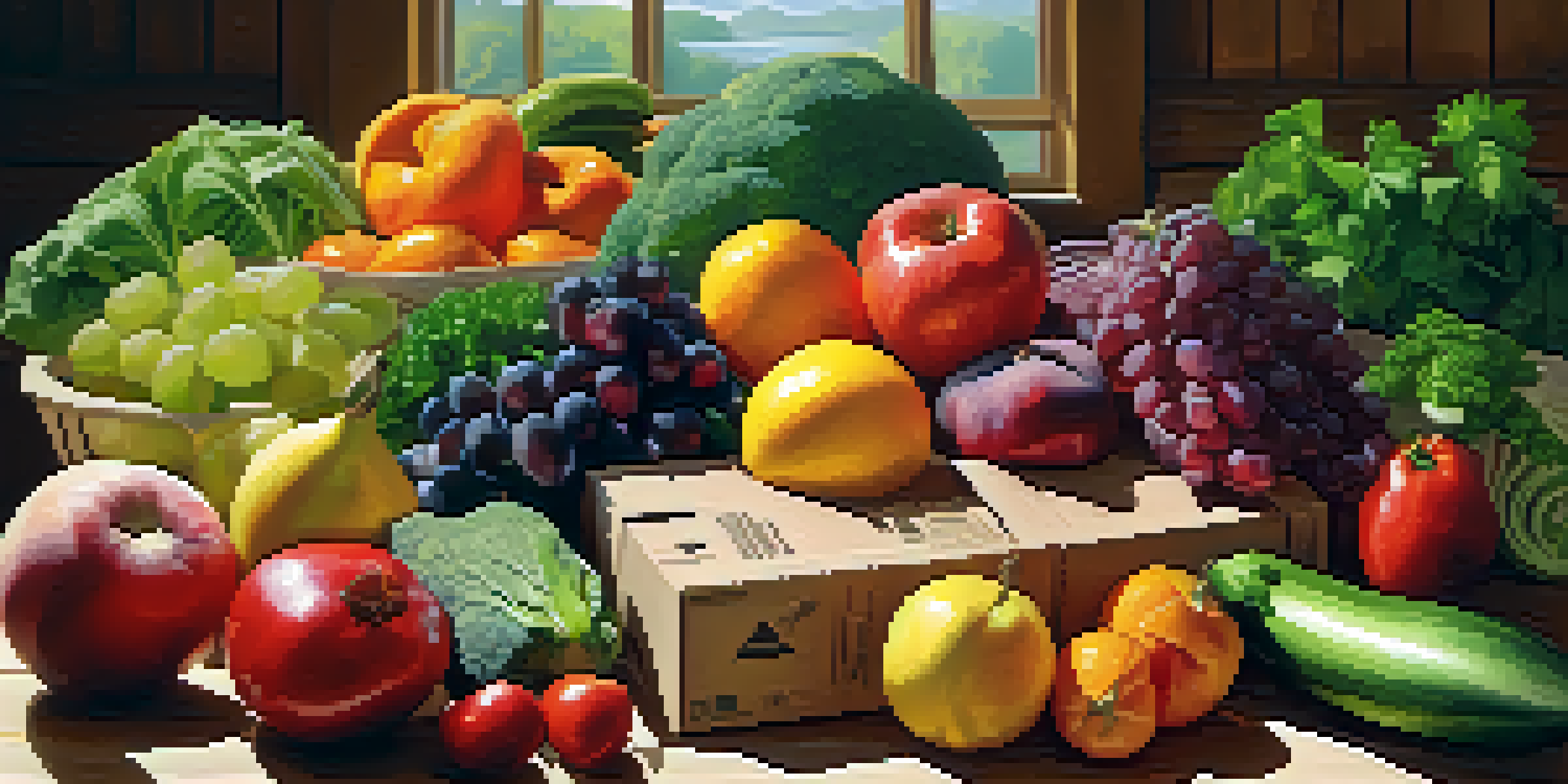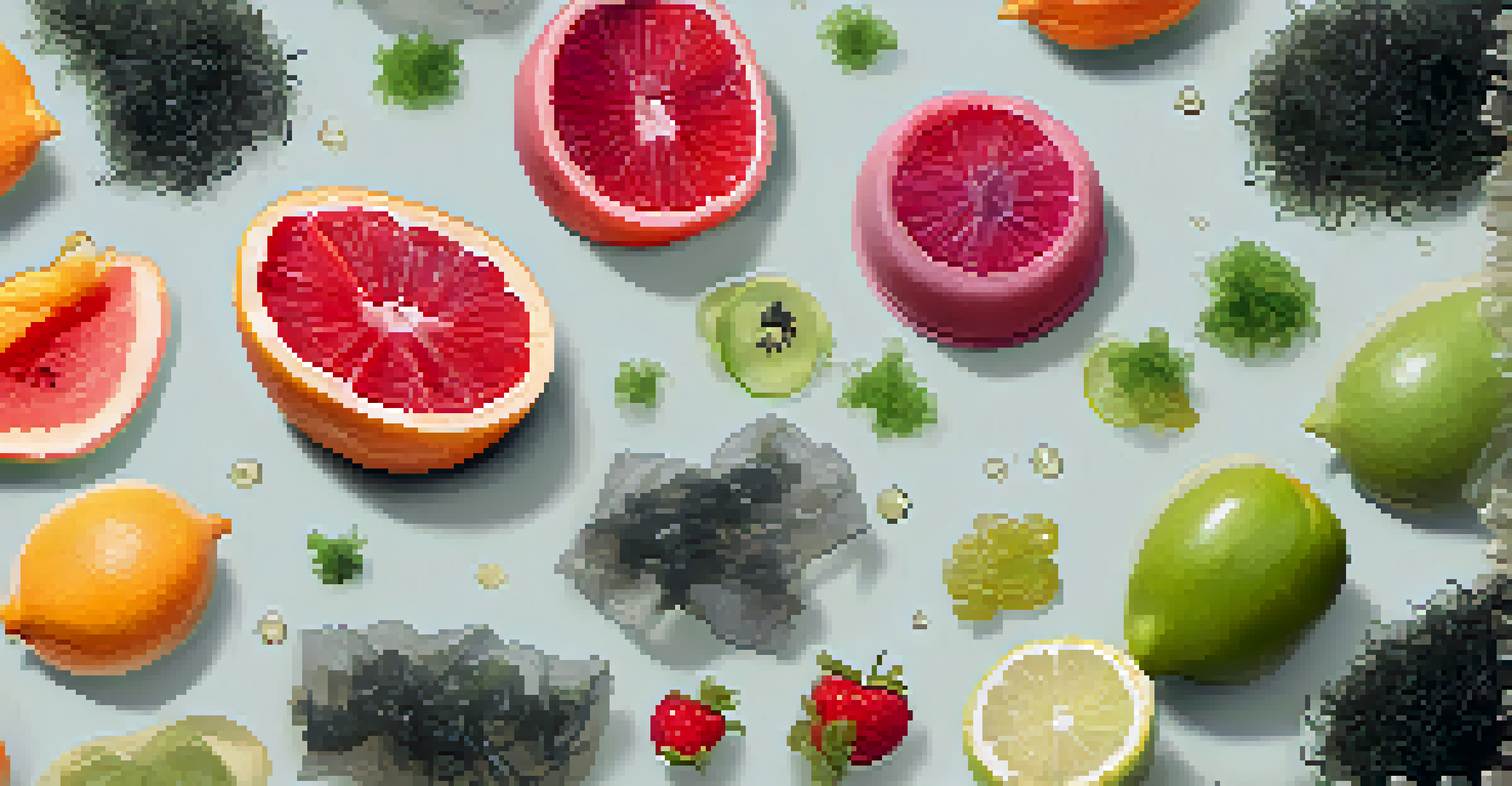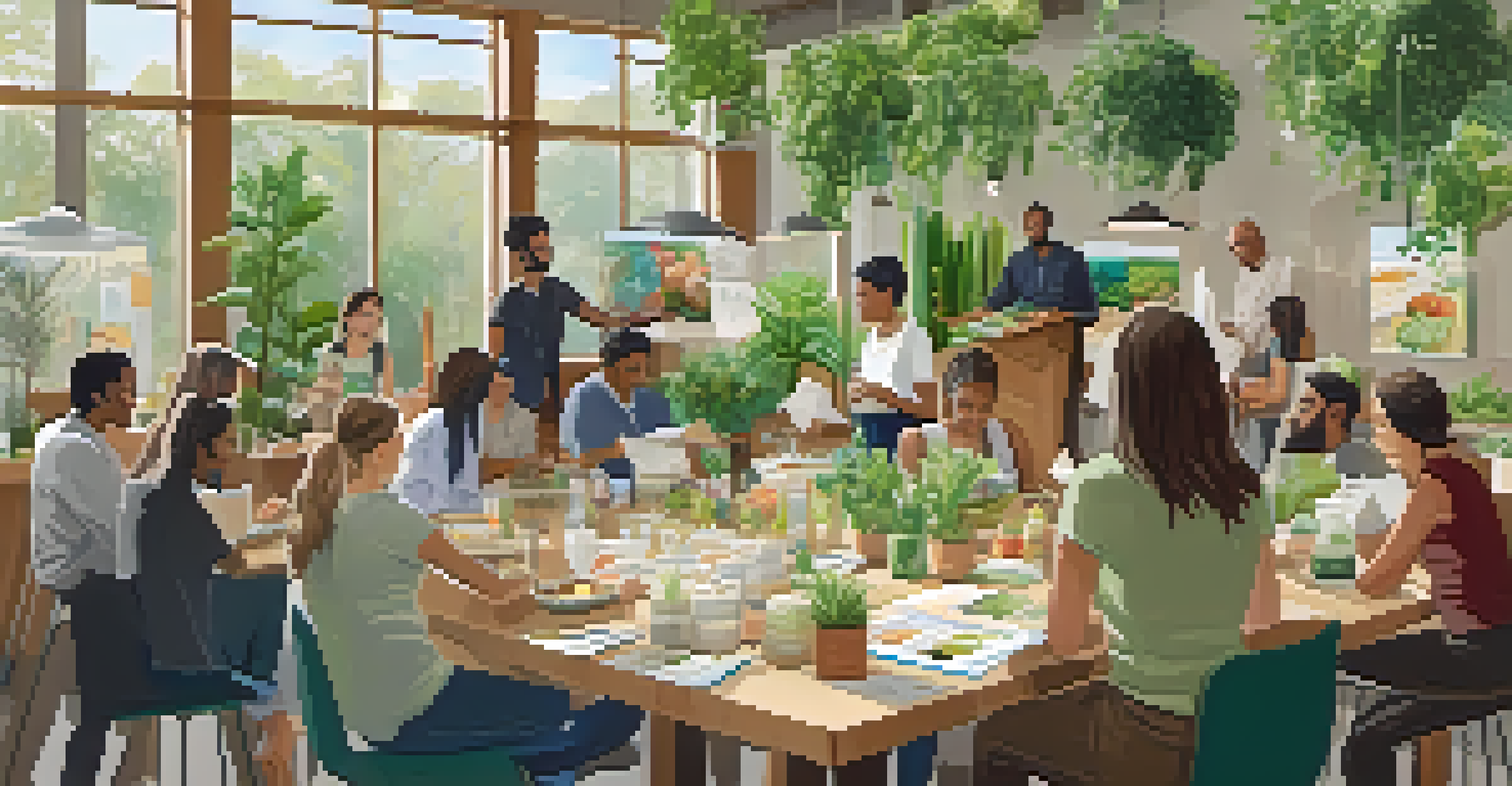The Influence of Packaging on the Sustainability of Raw Foods

Understanding Sustainability in Raw Food Packaging
Sustainability in raw food packaging refers to the practices that minimize environmental impact while preserving food quality. This concept encompasses everything from sourcing materials to the disposal of packaging waste. The goal is to create a closed-loop system where materials can be reused or recycled, thus reducing landfill contributions.
Sustainability is no longer about doing less harm. It's about doing more good.
When we talk about sustainability, we often think of biodegradable materials, such as plant-based plastics or recycled paper. These options can significantly lower the carbon footprint associated with traditional packaging. For instance, using compostable packaging for fresh produce can help reduce waste in landfills while providing a more eco-friendly alternative.
Moreover, sustainable packaging not only benefits the environment but also appeals to conscious consumers. As awareness about sustainability grows, more people are seeking products with eco-friendly packaging. This shift can motivate brands to adopt better practices, creating a positive cycle of sustainability in the food industry.
The Impact of Packaging Materials on Food Waste
Packaging materials play a critical role in extending the shelf life of raw foods, thereby reducing food waste. Effective packaging can prevent spoilage and protect food from external factors like moisture and air. For example, vacuum-sealed bags can keep fruits and vegetables fresh for much longer than traditional packaging, minimizing waste.

On the flip side, excessive or non-biodegradable packaging can contribute to an increase in food waste. When consumers encounter overly packaged items, they may feel disillusioned and opt for less packaged alternatives. This creates a paradox where the very packaging meant to protect food can sometimes lead to its rejection, thus increasing waste.
Sustainable Packaging Reduces Waste
Using biodegradable materials and innovative packaging solutions can significantly lower food waste and environmental impact.
Balancing effective protection with minimal environmental impact is the key to reducing food waste. Innovative solutions, like edible packaging or reusable containers, are emerging to address these challenges. Brands that prioritize both food preservation and sustainability are likely to resonate more with eco-conscious consumers.
Consumer Behavior and Sustainable Packaging Choices
Consumers today are more informed than ever about the environmental impact of their choices, including food packaging. Many shoppers actively seek out products with sustainable packaging, often willing to pay a premium for eco-friendly options. This shift in consumer behavior is influencing brands to rethink their packaging strategies.
The greatest threat to our planet is the belief that someone else will save it.
For instance, a survey might reveal that over 70% of consumers prefer brands that use recyclable or compostable materials. This kind of insight drives companies to invest in sustainable practices, knowing they can attract and retain customers. It’s not just a trend; it’s becoming a core part of brand identity.
Ultimately, the relationship between consumer behavior and packaging choices is a two-way street. Brands that prioritize sustainability not only cater to the growing demand but also foster a loyal customer base. This creates an opportunity for businesses to innovate in packaging while supporting a more sustainable food system.
Innovations in Sustainable Packaging Solutions
The quest for sustainable packaging has spurred a wave of innovations in recent years. Companies are exploring materials like seaweed, mushroom mycelium, and even recycled ocean plastics as alternatives to traditional packaging. These innovations not only reduce waste but also offer novel marketing opportunities for brands looking to stand out.
For example, some brands have started using packaging made from algae, which is both biodegradable and ocean-friendly. This not only helps reduce plastic pollution but also appeals to eco-conscious consumers who want to make a positive impact. Innovations like these show that sustainability can go hand-in-hand with creativity.
Consumer Demand Drives Change
As consumers increasingly prefer eco-friendly packaging, brands are motivated to adopt sustainable practices to attract loyal customers.
As research and development continue to advance, we can expect even more exciting solutions on the horizon. The future of sustainable packaging will likely involve smart technologies that monitor freshness, enabling consumers to make better purchasing decisions. This evolving landscape is a testament to the potential of sustainable practices in the raw food market.
Regulatory Landscape Influencing Packaging Choices
Governments and organizations worldwide are implementing regulations to promote sustainable packaging practices. These regulations often focus on reducing single-use plastics and encouraging recycling initiatives. As a result, brands must adapt their packaging strategies to comply with these evolving standards.
For instance, the European Union has set ambitious targets for reducing plastic waste, which includes promoting alternatives to non-recyclable materials. Brands that fail to comply may face penalties or lose market share to competitors who prioritize sustainability. Understanding these regulations is crucial for businesses looking to thrive in this landscape.
In some regions, incentives are offered to companies that adopt sustainable practices, making it economically feasible to switch to eco-friendly packaging. This regulatory landscape not only fosters innovation but also encourages collaboration between brands, consumers, and policymakers to drive meaningful change in the food industry.
The Role of Education in Sustainable Packaging Awareness
Education plays a vital role in fostering awareness about sustainable packaging in the raw food sector. By informing consumers about the benefits of eco-friendly packaging, brands can empower them to make informed choices. Workshops, campaigns, and informational content can all contribute to greater consumer understanding.
For example, a grocery store might host a session on the advantages of adopting reusable bags or compostable packaging. This kind of community engagement not only raises awareness but also builds a sense of responsibility among consumers. When people understand the impact of their choices, they are more likely to support sustainable practices.
Education Fuels Sustainability Awareness
Informing consumers about the benefits of sustainable packaging empowers them to make responsible choices and supports a more eco-friendly food system.
Furthermore, educating consumers can create a ripple effect, encouraging them to share their knowledge with friends and family. As awareness spreads, the demand for sustainable packaging will continue to grow, prompting more brands to invest in eco-friendly solutions. Ultimately, education is a powerful tool in driving the shift toward a more sustainable food system.
The Future of Sustainable Packaging in Raw Foods
As we look ahead, the future of sustainable packaging in raw foods appears promising, albeit challenging. With an increasing emphasis on sustainability, brands are likely to invest more in research and innovation to find new solutions. This could lead to a wider variety of eco-friendly packaging options that meet both consumer needs and environmental goals.
However, the journey towards sustainability requires collaboration among all stakeholders, including manufacturers, retailers, and consumers. By working together, they can create a more sustainable supply chain that prioritizes environmental responsibility. This collaborative approach can help overcome challenges and drive meaningful change in the industry.

In conclusion, while the path to sustainable packaging may be complex, it is essential for the future of raw foods. By embracing innovation, consumer education, and regulatory compliance, we can create a food system that not only nourishes us but also respects our planet. The influence of packaging on sustainability is profound, and its evolution will shape our food choices for years to come.